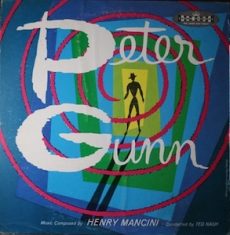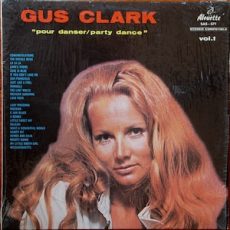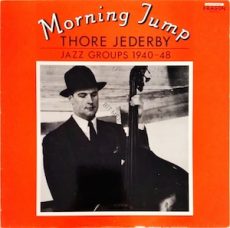
Daily Dose Of Jazz…
Theodore Malcolm Nash Sr. was born on October 31, 1922 in the Boston suburb of Somerville, Massachusetts. His goal was to become a classical flutist until he began playing saxophone in his early teens. He started playing professionally when he went on the road with a succession of dance bands. In 1944, he became tenor saxophonist for the Les Brown big band.
The late 1940s had him married and settling in Los Angeles, California where he became an active session musician in the Hollywood movie and television studios. In 1956, he recorded with Paul Weston’s orchestra the album Day by Day, with vocals by his former colleague and close friend, Doris Day.
He was the featured soloist on The Music from Peter Gunn soundtrack, performing the alto saxophone solo on the theme and on the second bridge of Dreamsville. Through the 1950s and 1960s, he worked as a sideman for June Christy, Nat King Cole, Bing Crosby, Billy Eckstine, Ella Fitzgerald, Frank Sinatra, and Nancy Wilson. During the 1970s, he worked with Judy Collins and Quincy Jones.
Retiring in the 1980s, saxophonist, flutist and clarinetist Ted Nash Sr. died on May 12, 2011.
More Posts: clarinet,flute,history,instrumental,jazz,music,saxophone

Daily Dose Of Jazz…
Rick DellaRatta was born October 23, 1961 in Schenectady, New York. The oldest of five children, he studied at the New England Conservatory, earning a bachelor’s degree in Piano Performance and a master’s degree in Jazz Composition. He studied jazz piano with Jackie Byard, Kenny Werner, Charlie Banacos, and Richie Bierach and classical piano with Thomas Stumpf.
In 1997 Rick along with Eddie Gomez, Dave Liebman, and Lenny White released the album Thought Provoking. In 2000 he was nominated for a MAC award for Recording of the Year.
Witnessing the 9/11 attacks from a New York City rooftop Rick was inspired while watching the unfolding tragedy to write a poem which became known as Jazz for Peace. The poem would later become a worldwide movement promoting peace through jazz.
Pianist and singer Rick DellaRatta, who has recorded five albums, continues to perform, tour and record.
More Posts: bandleader,history,instrumental,jazz,music,piano,vocal

Daily Dose Of Jazz…
Gus Clark was born Gustave De Clercq on October 21, 1913 in Antwerp, Belgium. While still in his teens he led local dance bands and also played in the groups of musicians such as Harry Pohl, Maurice Pinto, and Jack Hoedemaeker.
In the 1930s Gus played with his own group in Brussels, Belgium, and Coleman Hawkins performed with this ensemble. He later set up a new ensemble of all-Black musicians in Belgium, which included Lauderic Caton as a sideman.
Clark performed with Jean Omer, Jean Robert, and Gus Deloof as a sideman, and continued recording as a leader in the 1940s and 1950s.
Pianist Gus Clark died in his native city on April 10, 1979.
More Posts: history,instrumental,jazz,music,piano

Daily Dose Of Jazz…
John Funkhouser was born on October 16, 1966 in Boston, Massachusetts and studied classical piano from the age of seven, and classical bass starting at nine. He earned a B.A. in Musicology at Cornell University and returned to Boston to earn a Master’s degree from New England Conservatory in jazz piano, bass and composition in 1995. After a year performing in Singapore and four years performing and teaching in New York City, he again returned to Boston in 2000. This move was to raise a family, perform, and accept a job at Berklee College of Music, where he taught ear training, piano, bass, harmony, and ensembles until 2021.
Performing a wide spectrum of music, including all types of jazz, funk, rock, hiphop, Indian classical music, reggae, other world music and Western classical music, John is in equal demand as a jazz bassist and pianist. He has performed and/or recorded with Grammy winners Joe Lovano, Charles Neville, Steve Gadd, Abe Laboriel Sr., Luciana Souza, Mark Walker, Max Weinberg and Grammy nominees Bobby Watson, Francisco Mela, and Tierney Sutton.
In addition he has performed with among others Geri Allen, Bill Pierce, Joe Hunt, Herb Pomeroy, Francisco Mela, and Rebecca Cline. He leads Piandia, a duo specializing in Indian classical music, with tabla player Jerry Leake and the John Funkhouser Group, and has toured the U.S., Europe, Africa and Asia several times with both bands.
Pianist, bassist, arranger, and producer John Funkhouser, whose discography catalogue includes over 80 compact discs, currently resides, performs and teaches in Albuquerque, New Mexico.
More Posts: arranger,history,instrumental,jazz,music,piano,producer

Daily Dose Of Jazz…
Thore Jederby was born October 15, 1913 in Stockholm, Sweden and received his formal training in music at the Royal Swedish Academy of Music. He began playing jazz in the mid-1930s, playing with Arne Hülphers’s band from 1934 to 1938, and then with Thore Ehrling’s ensemble from 1938 through the end of World War II.
Thore led his own group, the Swing Swingers, for studio recordings in the mid-1930s, and led smaller ensembles for recording sessions in the 1940s.
Later in his life, Jederby became active in the capturing of the history of Swedish jazz. He was involved in reissues of early Swedish recordings, curated radio shows devoted to Swedish jazz, and participated in a national commission on the history of jazz in Sweden.
Double bassist, record producer, and radio broadcaster Thore Jederby died on January 10, 1984 in his city of birth.
More Posts: bass,history,instrumental,jazz,music


